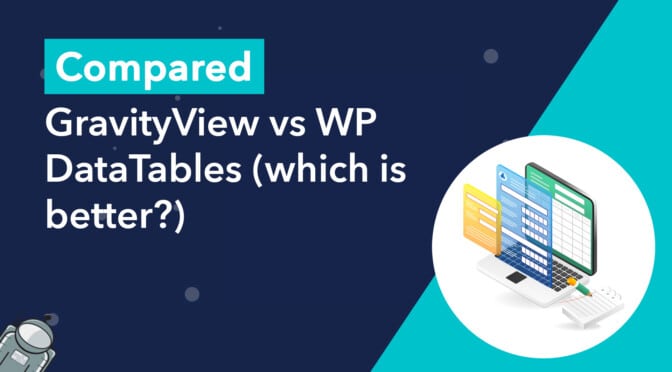If you’re looking for a plugin that allows you to display Gravity Forms data on the front end, GravityView and wpDataTables are two possible solutions.
You may be tempted to think of wpDataTables as a GravityView alternative, but is that really true? Both plugins offer powerful solutions for displaying form data, but they have some key differences as well.
In fact, both plugins are designed for slightly different purposes and therefore they each excel in different areas.
In this post, we’ll compare GravityView and wpDataTables to find out whether wpDataTables really is a viable GravityView alternative.
What is wpDataTables?
wpDataTables is a WordPress plugin that allows you to manage different kinds of data. The plugin is designed to help you display and interact with your data in a meaningful way. wpDataTables allows you to display your data in a table/spreadsheet, as well as create charts and visualizations.
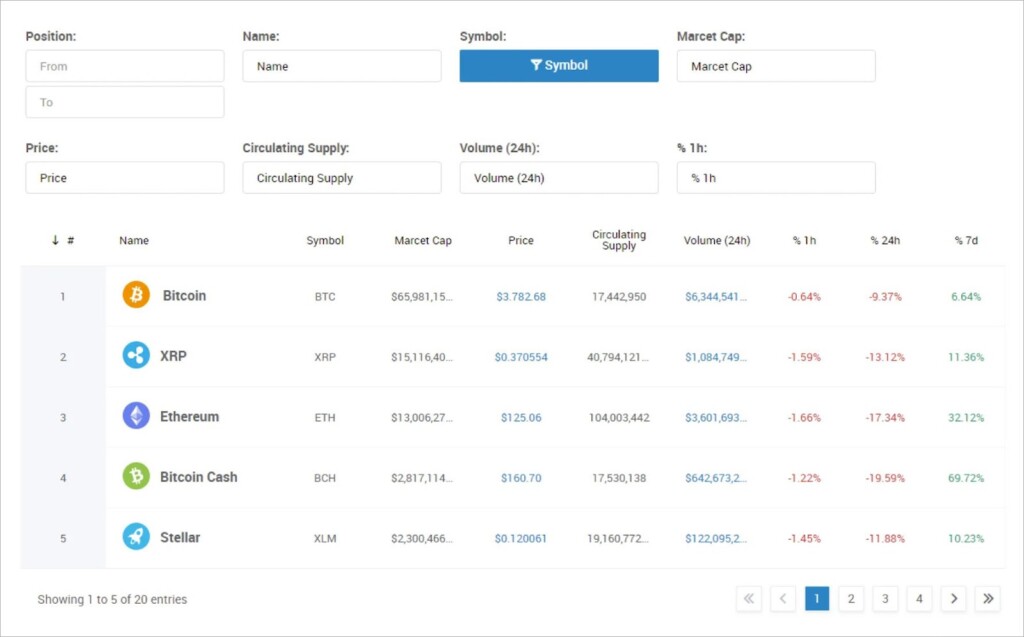
With wpDataTables you can display data from a file, a MySQL query, an external URL or a form plugin. However, to display data from Gravity Forms, you’ll need to install the Gravity Forms Integration add-on.
GravityView vs wpDataTables
GravityView is a premium add-on for Gravity Forms that allows you to display form entries on the front end and build powerful web applications. GravityView is also a Gravity Forms Certified Developer that builds and maintains a suite of essential Gravity Forms add-ons.
wpDataTables, on the other hand, is not a Gravity Forms add-on (although they do offer a Gravity Forms integration).
Let’s compare GravityView and wpDataTables to find out whether wpDataTables can really be classified as an alternative to GravityView
Layouts
As the name suggests, wpDataTables only allows you to display data in a table layout, or, more specifically, a DataTables layout. In other words, you’re limited to displaying your data using rows and columns.
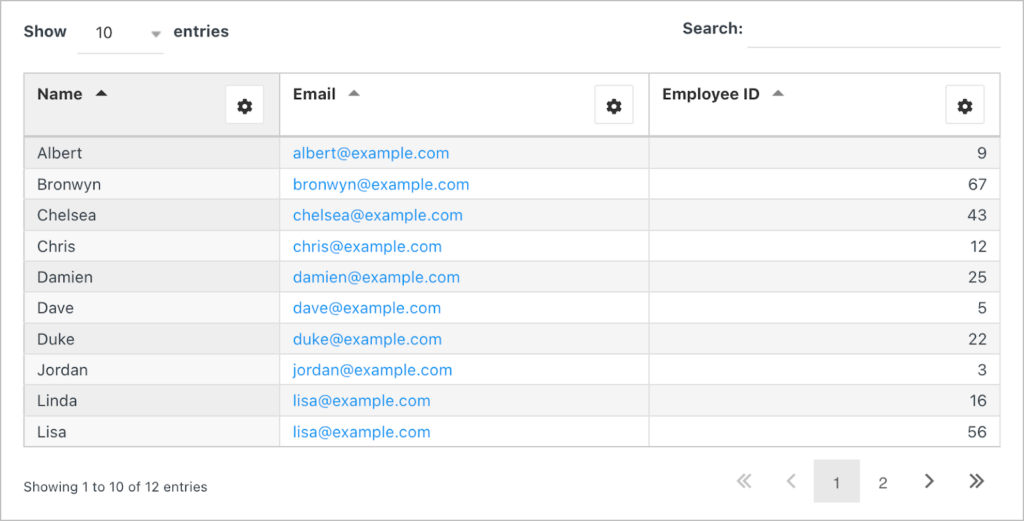
GravityView does things a little differently, as it allows you to display data using up to five different layout types.
- List (default)
- Table (default)
- DataTable (requires Core + Extensions)
- Maps (requires All Access)
- DIY (requires All Access)
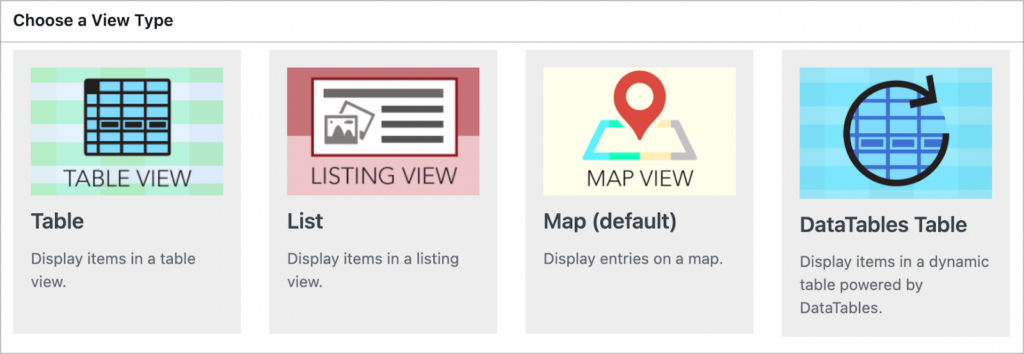
📝 The GravityView layouts that you have access to will depend on your license level.
The GravityView layout type most similar to wpDataTables is… you guessed it, the DataTables layout! Both GravityView’s DataTables layout and wpDataTables include the following features:
- Responsive tables (i.e., the layout will collapse on mobile devices)
- Export data to different formats including CSV, Excel and PDF
- Scrollable
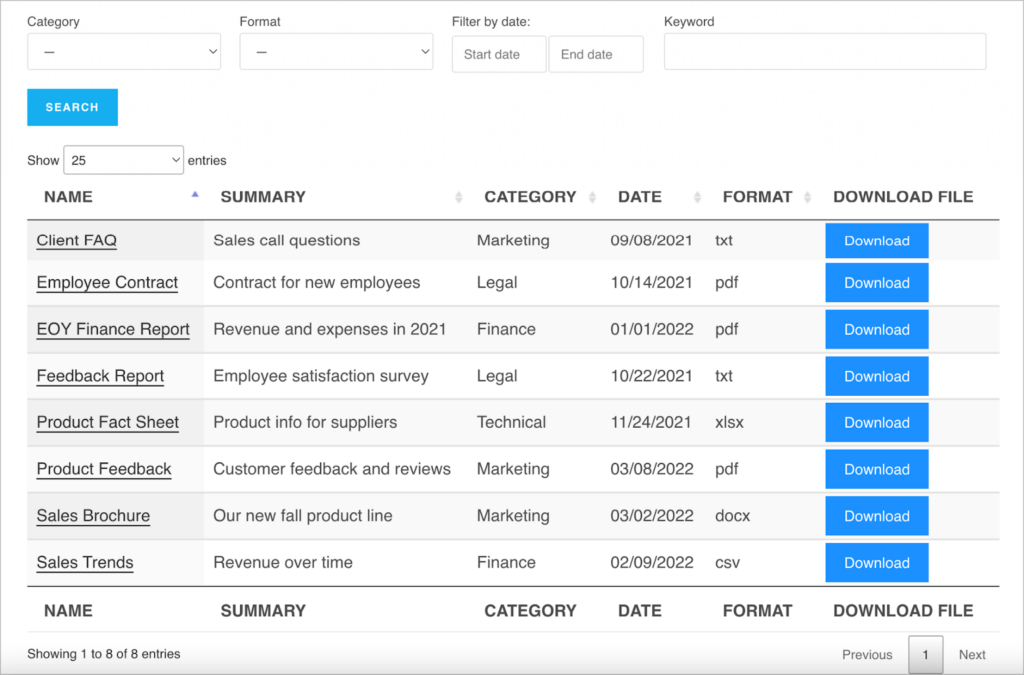
Along with the features mentioned above, GravityView allows you to fix table headers so that they remain in view when scrolling. You can also enable “Auto-Update” to refresh your data at a set interval (i.e. every 5 minutes). This is perfect for live-updating applications.
💡 Pro tip: See how to use Gravity Forms as a powerful database solution using the GravityView table/DataTables layout.
User interface
GravityView includes a visual, drag-and-drop builder, allowing you to configure your Views exactly how you want them. Additionally, the View editor allows you to add both widgets and fields to your layout. Widgets include Search Bars and page links, while fields are the fields in your form.
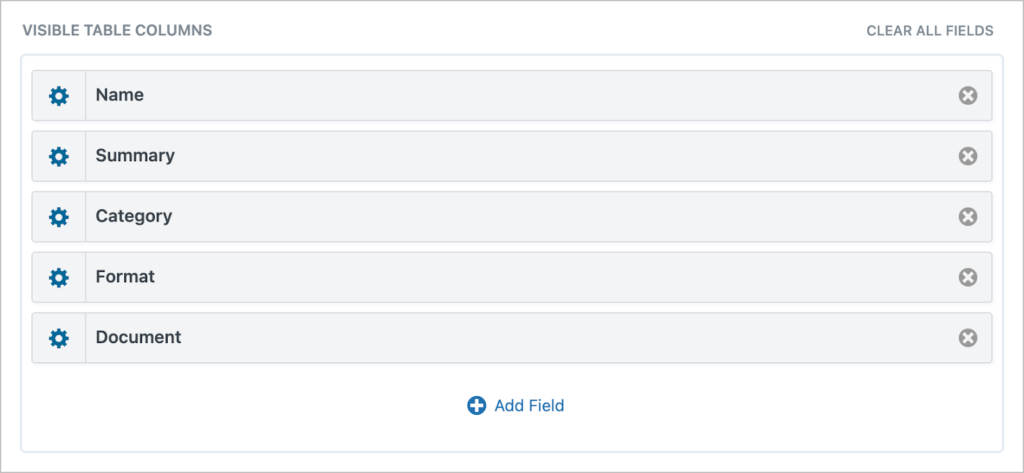
On the other hand, wpDataTables adds a configuration page to the WordPress admin, allowing you to create new tables that link to different data sources. After installing the Gravity Forms Integration, you’ll be able to select “Gravity Forms” as the data source.
Both user interfaces are easy to navigate. However, GravityView’s drag and drop functionality gives it the edge in terms of flexibility.
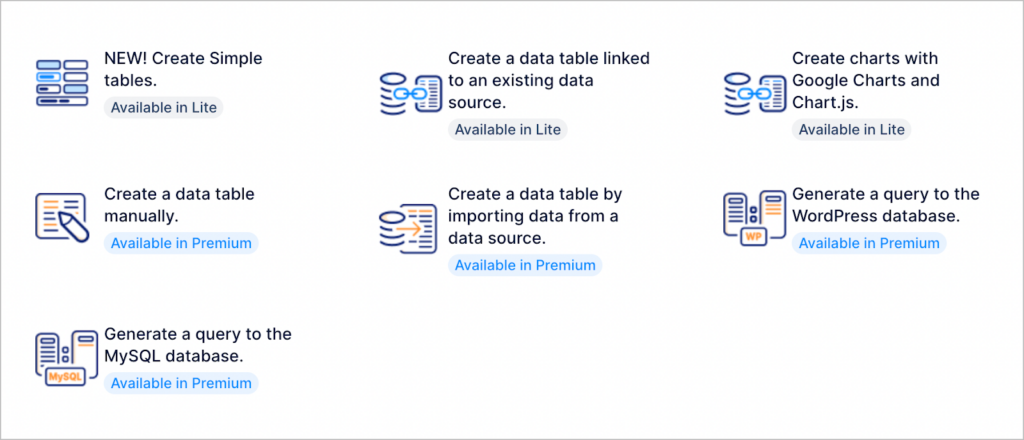
Now let’s move on and look at how each plugin handles individual field customizations.
Field settings
Both GravityView and wpDataTables allow you to customize each individual field (i.e. each column in your table).
With GravityView, you can define a set column width, add a custom label, hide fields from logged-out users, and add your own CSS classes for custom styles.
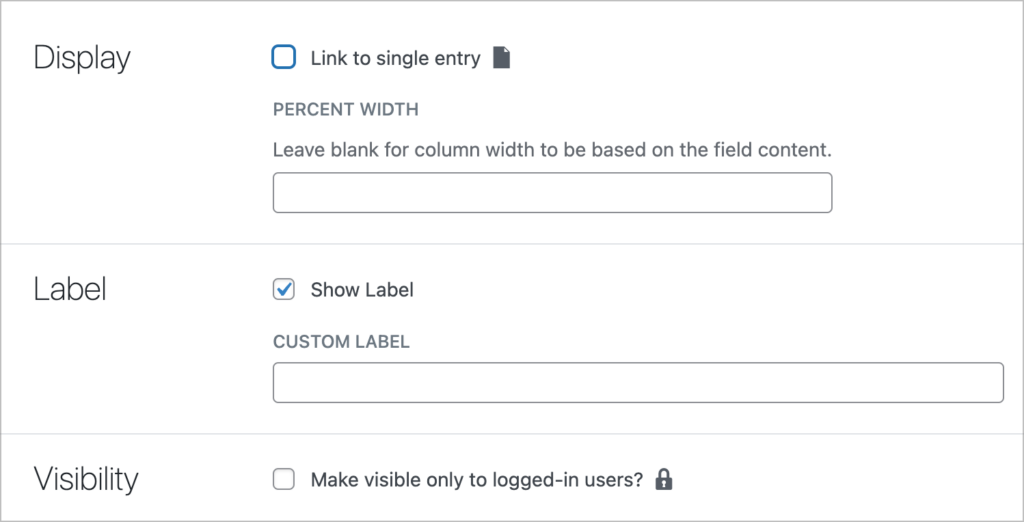
wpDataTables also contains a range of column settings, allowing you to change the field label, hide the column on the front end, add a custom prefix/suffix to column values, change the column color and more.
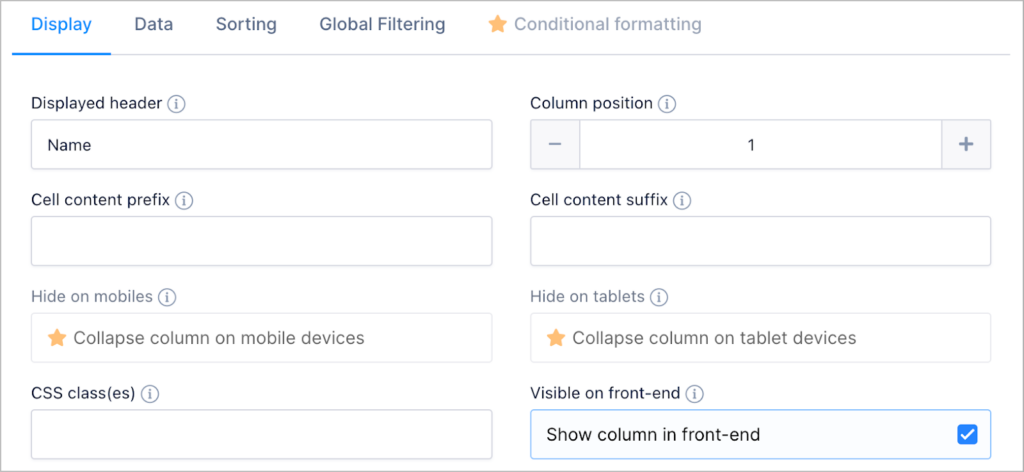
Now let’s look at the sorting and filtering capabilities of each plugin.
Sorting and filtering
GravityView includes a range of options for filtering and sorting entries in a View. You can sort by primary and secondary fields, change the sort direction, and filter by date.
Furthermore, the GravityView Advanced Filtering Extension adds powerful conditional logic settings, giving you even more ways to filter your data. For example, you can:
- Show only entries created by a specific user
- Only show the logged-in user’s entries
- Restrict entries by field values
- And much more
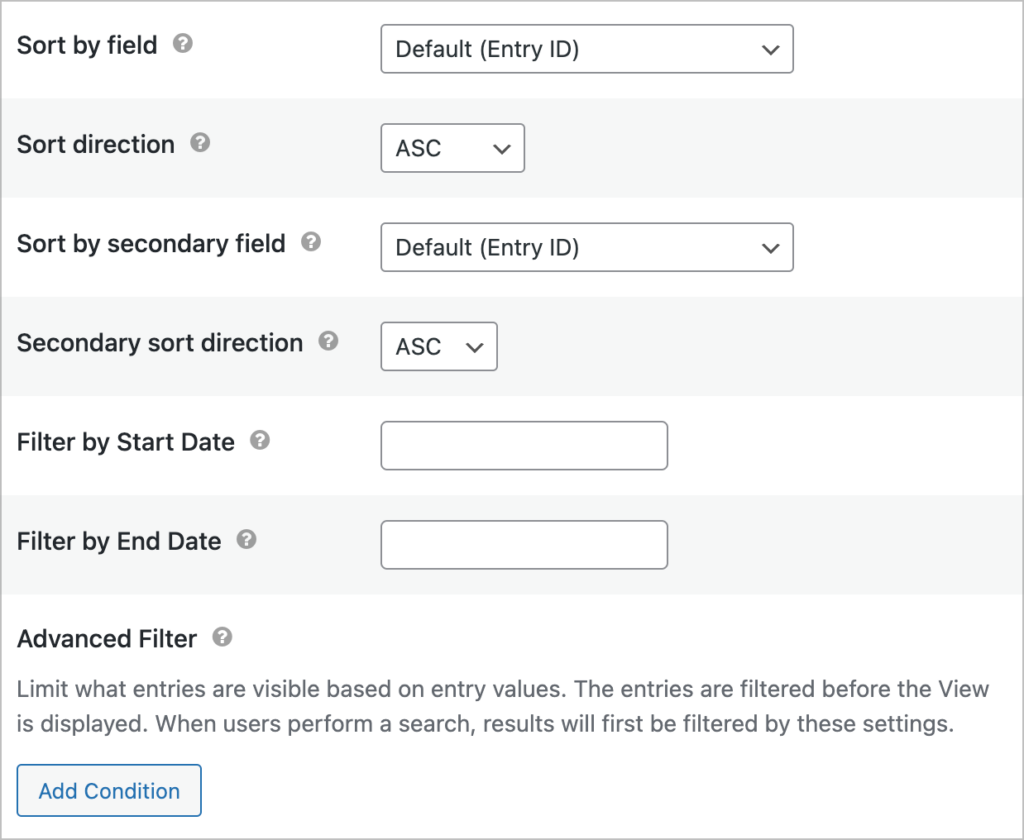
wpDataTables also includes sorting and filtering options, but they aren’t as extensive as GravityView’s. Like GravityView, you can limit entries to those created by the logged-in user, and filter by date range.
One of the big drawbacks of wpDataTables is that the sorting and searching functionality doesn’t work properly with Gravity Forms data. We cover this in more detail below under “Limitations”.
Entry editing
Both GravityView and wpDataTables allow you to edit entries from the front end. However, GravityView allows you to specify which fields are editable by customizing the Entry Entry layout. In wpDataTables, all fields are editable by default.
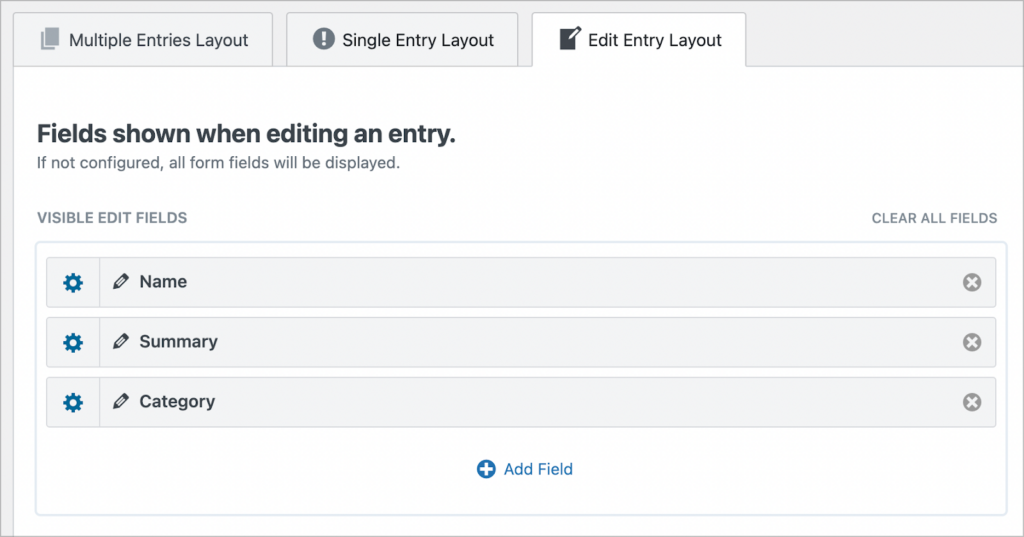
When editing an entry in GravityView, you’ll be taken to a separate page, showing all the editable fields. With wpDataTables, entries open in a popup window where you can edit field values individually. Both plugins allow users to edit their own entries.
Custom content
One of GravityView’s most powerful features is the Custom Content field. This allows you to add HTML, shortcodes, embedded content and other custom content into your Views. In other words, you can display custom content alongside Gravity Forms field values.
wpDataTables does not have this functionality, which means you’re limited to only displaying form field data.
Integrations
Not only does GravityView integrate seamlessly with Gravity Forms, it also integrates with several other Gravity Forms add-ons! This includes the Survey add-on, payment gateway add-ons, the Poll add-on and various other Certified add-ons like GFChart and Gravity Flow.
While wpDataTables does integrate with the Gravity Forms Core plugin, it does not support integrations with any other Gravity Forms add-ons or extensions.
Flexibility and building web applications
GravityView’s visual View editor and extensive customization options make it more than a simple plugin for displaying form data. In fact, using GravityView, you can build powerful CRUD applications. This includes job boards, directories, document libraries, productivity trackers and more!
While wpDataTables is useful for displaying Gravity Forms data in a table and editing entries on the front end, it lacks flexibility when it comes to layout and customization options. If you’re thinking of using wpDataTables as a GravityView alternative, this is an important point to consider.
Pricing
Lastly, let’s compare GravityView and wpDataTables in terms of pricing.
The wpDataTables premium plugin starts at $69/year for a single site and the Gravity Forms Integration costs a further $39 (depending on how many sites you need).
GravityView starts at $99 but to get access to the DataTables layout, you’ll need the GravityView Pro license, which costs $249.
wpDataTables limitations
If you’re thinking of using wpDataTables as a GravityView alternative, it’s important to be aware of the plugin’s limitations.
Searching and sorting
If you’re using wpDataTables to display Gravity Forms data, the sorting and searching functionalities won’t work properly when “server-side processing” is enabled. And unfortunately, server-side processing is required for editing entries.
This is a big issue if you require both the edit entry functionality as well as searching and sorting capabilities. Needless to say, there is no such limitation in GravityView!
Entry editing
wpDataTables doesn’t work well with the Gravity Forms File Upload field. If your form contains a File Upload field, and you edit one of the entries, all your files will be lost! This could have catastrophic consequences for your website.
Furthermore, the wpDataTables Gravity Forms integration does not support inline editing. It’s worth noting that inline editing is supported in GravityView when using our Inline Edit add-on.
Is wpDataTables a viable GravityView alternative?
So, is wpDataTables a viable GravityView alternative? Should it even be called a GravityView alternative?
wpDataTables is a popular plugin for displaying all kinds of data in WordPress. If you’re looking to display data from a file, a database query or even Google Sheets, then wpDataTables is the way to go.
However, when it comes to displaying data collected using Gravity Forms, wpDataTables is limited, and some functionality doesn’t work as expected.
There is a key difference between wpDataTables and GravityView: wpDataTables is purely for managing data, whereas GravityView is a framework for building powerful web applications using Gravity Forms. Because the two plugins serve slightly different proposes, it’s hard to compare them like-for-like.
Get started with GravityView today
If you’re looking for a way to display your Gravity Forms data, look no further than GravityView. Not only is GravityView a Gravity Forms Certified Add-On, it’s supported by a dedicated team of developers and support engineers.
If you found this post helpful, read our comparison of GravityView and Views for WPForms next.

Helpful tips right in your inbox.
Subscribe to our biweekly newsletter for tips, special offers, and more!
Helpful tips right in your inbox.
Subscribe to our biweekly newsletter for tips, special offers, and more!
